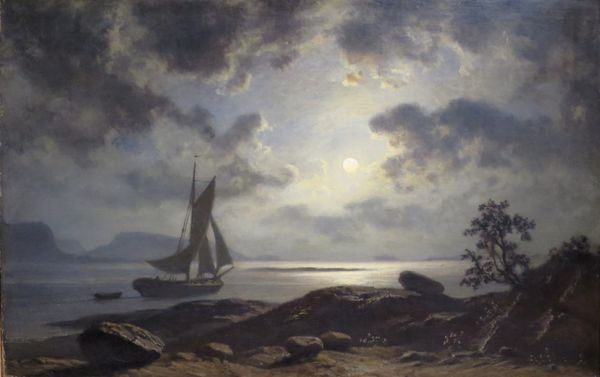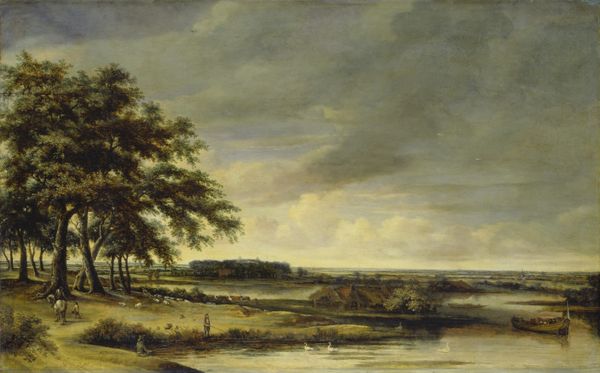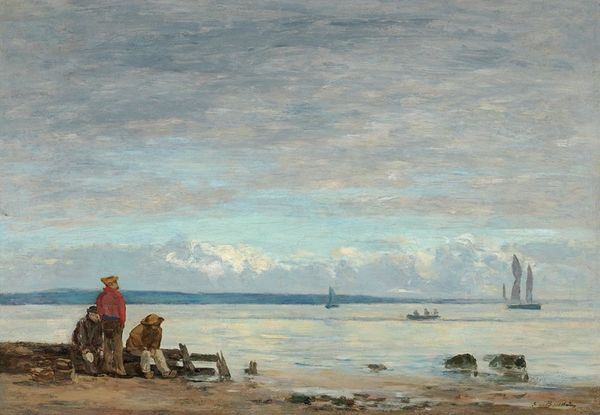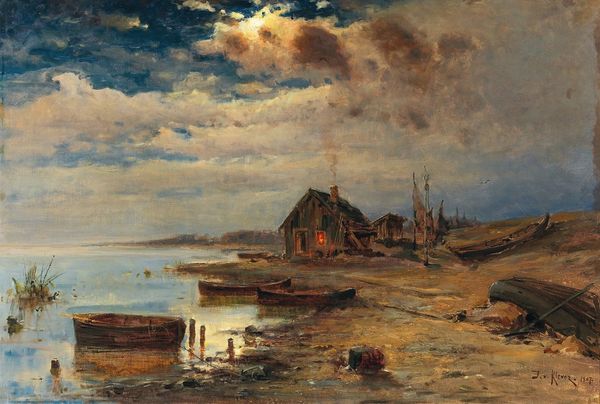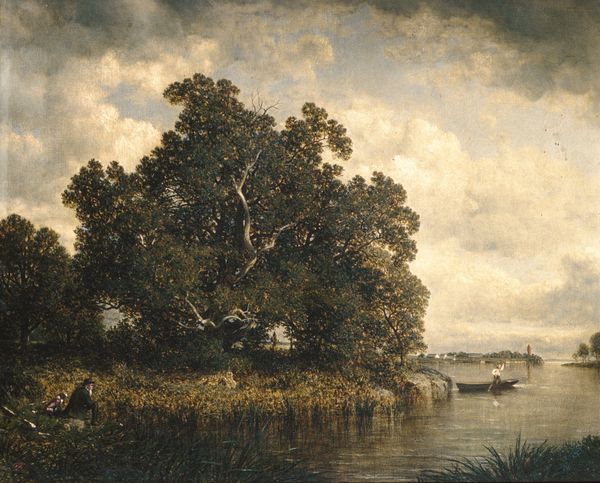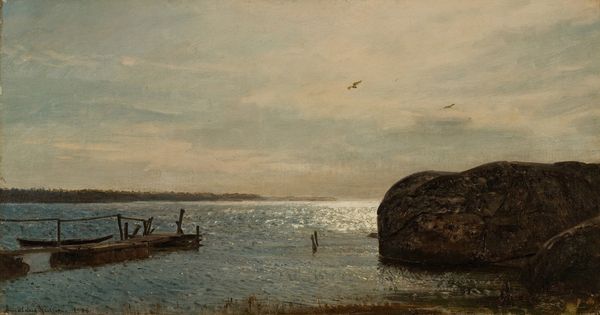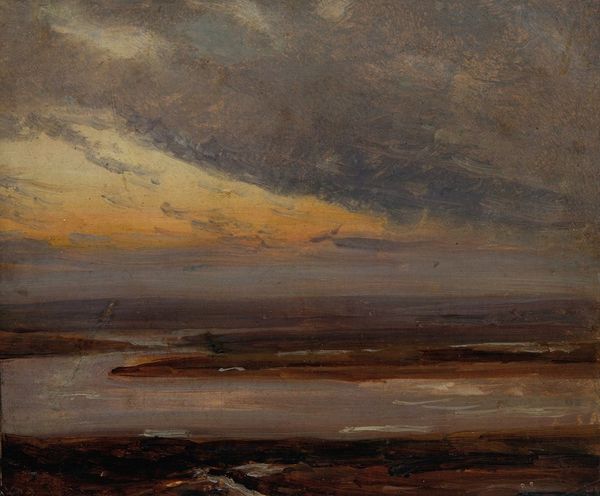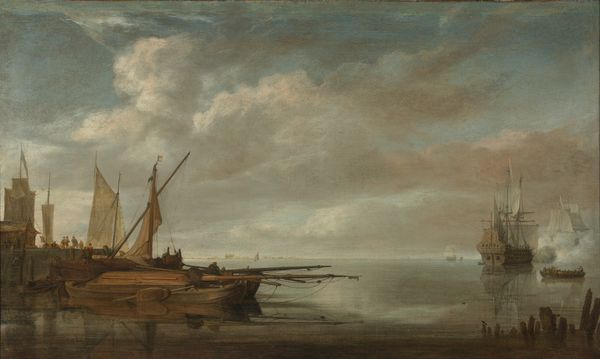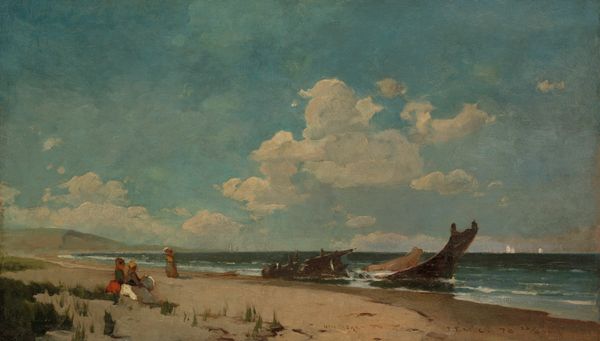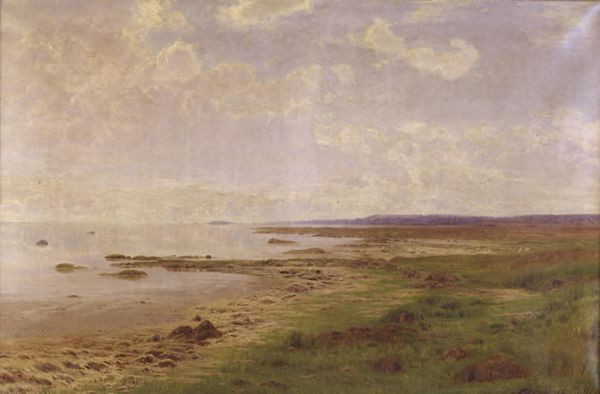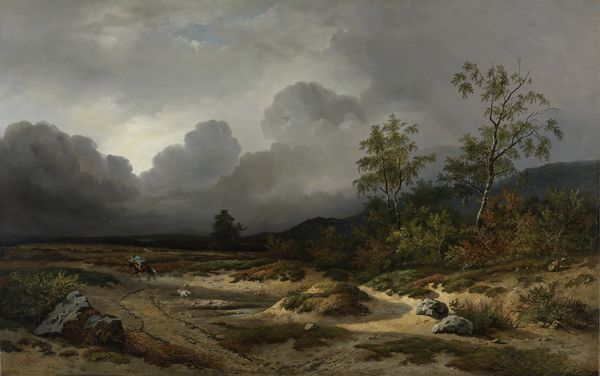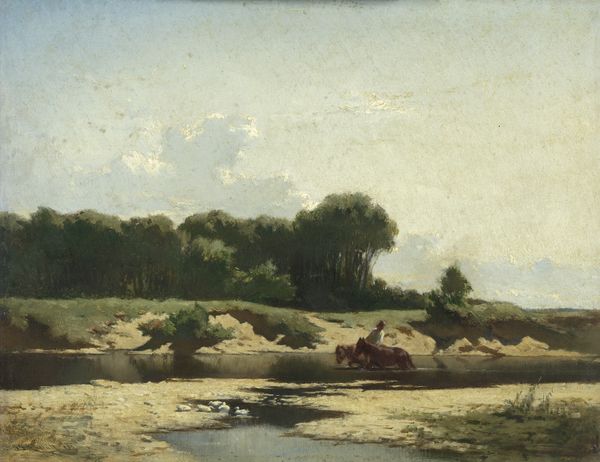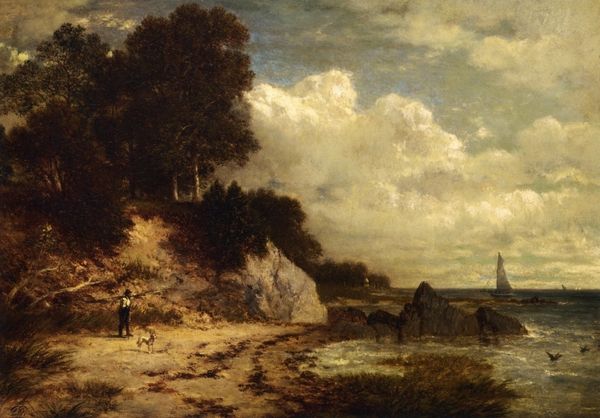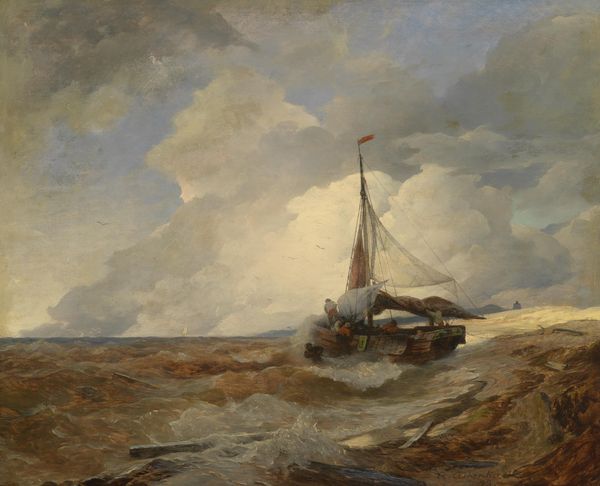
plein-air, oil-paint
#
plein-air
#
oil-paint
#
landscape
#
charcoal drawing
#
oil painting
#
romanticism
#
realism
Copyright: Public domain
Curator: Andreas Achenbach’s “Norwegian Landscape,” created in 1837, is such a captivating example of plein-air painting from the Romantic era, realized in oils. What catches your eye? Editor: Instantly, that brooding sky! It practically vibrates with energy, casting a dramatic light across the entire scene. The colours are muted, earthy... it feels incredibly raw and untamed. Curator: It certainly sets a tone, doesn't it? There’s a stillness despite the tempestuous weather, a quiet melancholy almost. I’m particularly drawn to the way Achenbach uses light to pick out the details of the lonely cabin and the figure with their dog. Editor: Right! It’s like he's asking us to consider the relationship between humanity and the immense, often unforgiving power of nature. Is the figure a symbol of resilience, or of vulnerability? Curator: Maybe both? Think of the cultural moment—this is early 19th-century Romanticism. There's this real fascination with the sublime, with experiences that overwhelm our senses and force us to confront our place in the world. It’s interesting to think about this alongside increasing industrialisation in Europe, with people fleeing rural poverty. The appeal to romanticise about places they had been ousted from is palpable here. Editor: Absolutely. And there’s something about the positioning of that solitary cabin – nestled amongst rocks, close to the shoreline, almost dwarfed by the landscape – that speaks volumes. Is it a sanctuary or a trap? Are we invited to romanticize a space that might be characterised by precarity? Curator: I agree. This artwork holds space for a number of possible perspectives. We feel small, insignificant, perhaps even exposed – yet simultaneously connected to the sheer beauty and magnificence around us. Editor: Beautifully put. It really makes you think about what "landscape" truly represents. More than just scenery, it’s a mirror reflecting our deepest hopes, fears, and anxieties, shaped by a constantly changing political and social context. Curator: Yes, an enduringly evocative work, charged with historical complexity. Editor: Indeed. A window into another world, but also a reflection of our own.
Comments
No comments
Be the first to comment and join the conversation on the ultimate creative platform.
